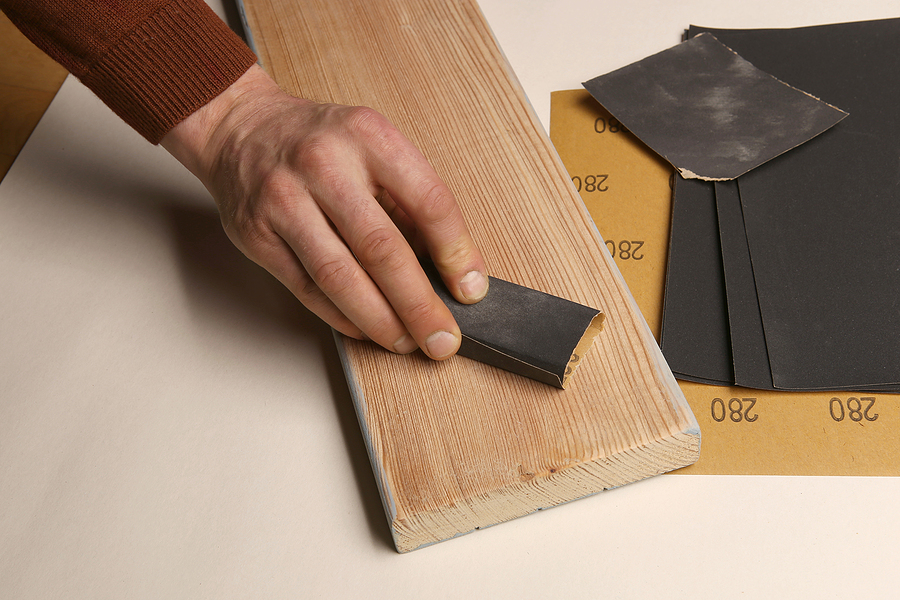Posted by Sandpaper America on May 30th 2024
Top Recommended Sanding Supplies for DIY Enthusiasts
When it comes to DIY projects, sanding is an indispensable step that can make or break the final outcome. Whether you’re refinishing a piece of furniture, crafting a new wooden item, or preparing surfaces for painting, sanding ensures a smooth, even finish, enhancing the durability and appearance of your work. In this comprehensive guide, we will explore the top sanding supplies every DIY enthusiast should have, provide insights into advanced tools for professional results, and share tips and techniques to elevate your sanding game.

Essential Sanding Supplies for Every DIY Toolkit
Sandpaper
Sandpaper is the cornerstone of any sanding toolkit. It comes in various grits, each suited for different stages of the sanding process:
- Coarse Grit (40-60): Ideal for removing material quickly and tackling rough surfaces. Best for initial sanding stages.
- Medium Grit (80-120): Perfect for smoothing out the rough sanding marks left by coarse grit. Suitable for general-purpose sanding.
- Fine Grit (150-220): Used for final sanding before finishing. This grit level helps achieve a smooth surface ready for painting or staining.
- Extra Fine Grit (240-400+): Often used for sanding between coats of finish or for polishing.
Besides grit levels, sandpaper is made from various materials like aluminum oxide, silicon carbide, and garnet, each offering different levels of durability and finish quality.
Sanding Blocks
Sanding blocks are essential for maintaining even pressure while sanding flat surfaces. They come in different forms:
- Foam Blocks: Flexible and suitable for curved surfaces.
- Rigid Blocks: Ideal for maintaining flat surfaces and edges.
- DIY Sanding Blocks: Custom-made by wrapping sandpaper around a wood or foam block for specific tasks.
Sanding sponges and flexible sanding sheets are also available for intricate and irregular surfaces.
Advanced Sanding Tools
Next-Level Sanders
For those looking to take their sanding to the next level, investing in advanced tools can significantly improve efficiency and results:
- Detail Sanders: Perfect for tight spaces and intricate details. These tools often come with various attachments for versatility.
- Orbital Sanders: Great for general-purpose sanding tasks. They provide smooth, swirl-free finishes and are easy to control.
- Belt Sanders: Best for heavy-duty sanding tasks. They are excellent for removing large amounts of material quickly and leveling surfaces.
Dust Collection Systems
Dust collection systems are crucial for maintaining a clean workspace and ensuring your health and safety. Options include:
- Shop Vacuums: Versatile and portable, suitable for small to medium projects.
- Built-in Dust Collection: Many modern sanders come with built-in dust collection systems, making them a convenient choice.
- Centralized Dust Collection: Ideal for larger workshops, these systems offer superior dust management.
Choosing the Right Sanding Supplies for Your Project
Selecting the right sanding supplies depends on various factors:
- Material: Different materials require different sanding approaches. For instance, wood might need a different type of sandpaper compared to metal or drywall.
- Finish: Consider the type of finish you want to achieve. A high-gloss finish may require more meticulous sanding and finer grits.
- Desired Outcome: The end goal of your project will influence your sanding choices. For example, a rustic look may require less fine sanding compared to a modern, sleek finish.
Budget-Friendly Options
Quality doesn’t always mean expensive. Many budget-friendly sanding supplies offer excellent performance:
- Sandpaper Sheets: Buying in bulk can reduce costs.
- Multi-purpose Sanders: Opt for versatile tools that can handle various tasks.
- DIY Solutions: Creating your sanding blocks and using reusable sanding sponges can save money without sacrificing quality.
Proper Sanding Technique: Avoiding Common Mistakes
Effective sanding requires proper technique to avoid common mistakes:
- Always sand with the grain: Sanding against the grain can cause scratches and damage the surface.
- Use consistent pressure: Applying too much pressure can create uneven surfaces, while too little pressure may not remove imperfections.
- Progress through grits: Start with coarse grit and work your way to finer grits for a smooth finish.
How to Achieve Smooth and Even Surfaces
Achieving a flawless finish involves attention to detail:
- Keep sandpaper clean: Dust and debris can clog sandpaper, reducing its effectiveness. Use a sandpaper cleaning block to prolong its life.
- Check your work frequently: Regularly inspect the surface to ensure even sanding and address any missed spots.
- Finish with a fine grit: Use extra fine grit sandpaper for the final sanding pass to ensure a smooth, polished surface.
Conclusion
Sanding is a fundamental step in any DIY project, and having the right supplies can make all the difference. By understanding the importance of sanding, investing in essential tools, and mastering effective techniques, you can achieve professional-quality results in your home improvement and woodworking endeavors. Don’t be afraid to experiment with different sanding supplies and techniques to find what works best for your projects. Continuous learning and practice are key to mastering the art of sanding.
Ready to elevate your DIY projects with top-notch sanding supplies? Look no further! Contact Sandpaper America at 1-800-860-7263 (SAND) to order online or over the phone today! We supply custom sandpaper orders and supplies to businesses and consumers alike.
Related Posts:
Maximizing
Your Workshop: The Benefits of Bulk Sandpaper Orders
The
Best Sanding Tools for Professional Craftsmen
Beginner's
Guide to Wet Dry Sanding Sheets: How to Get Started

